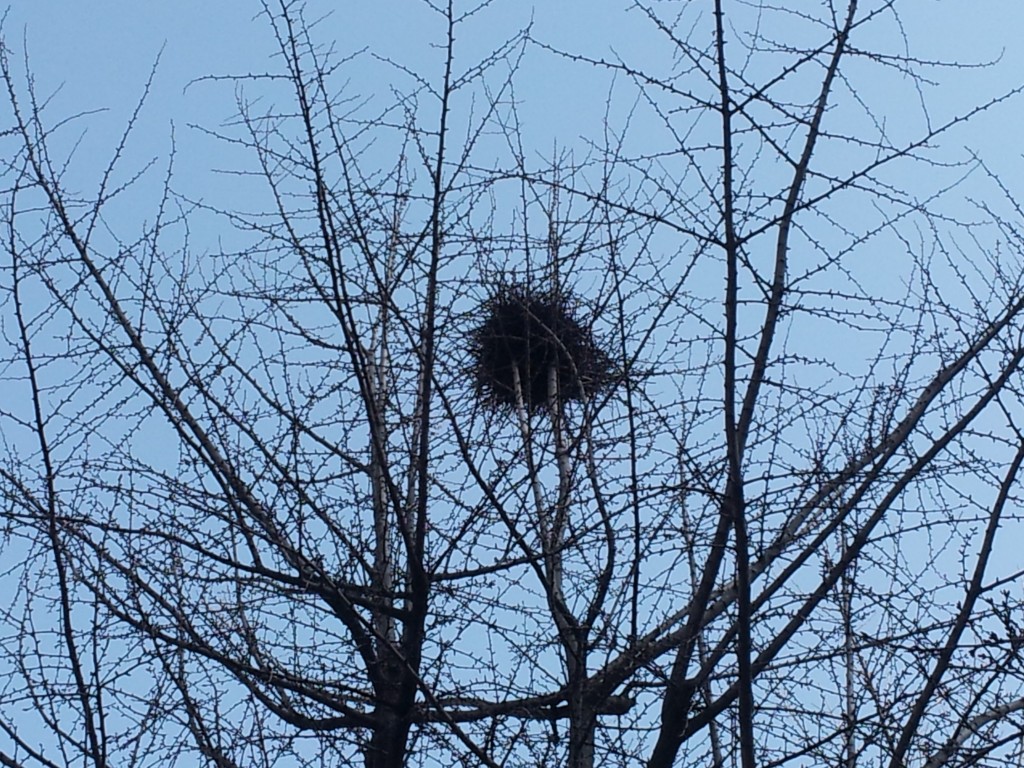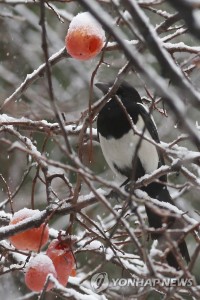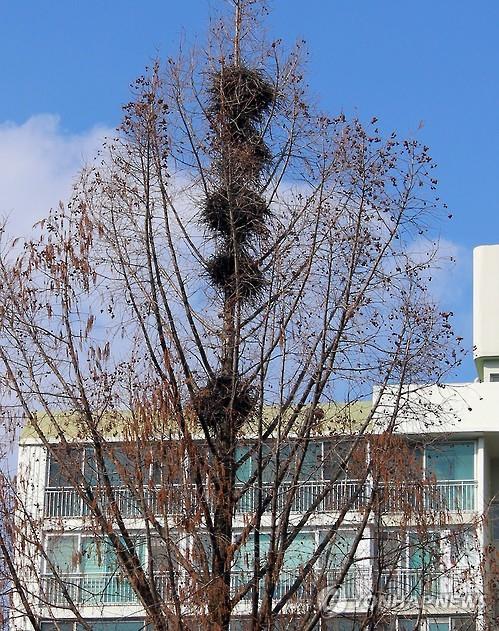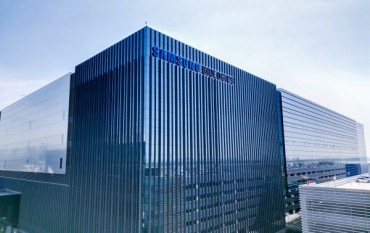
Magpies have been classified as harmful wild animals, and the number of magpies and crows captured on Jeju Island last year was 21,128. Jeju City and Seogwipo City organize a proxy capture team every year to manage harmful wild animals. They allow the use of guns and pay a fee of 200,000 to 500,000 won per captured wild boar and 5,000 won per magpie or crow. (Image courtesy of Yonhap)
SEOUL, March 13 (Korea Bizwire) —Employees at the state-run utility Korea Electric Power Corp. (KEPCO) are waging a yearly “nesting war” in spring to prevent magpie nests from causing power outages. As urbanization continues and trees are replaced by buildings, magpies have taken to building their nests on utility poles.
Magpies begin constructing their nests in February, often using metal wires that can come into contact with connections on utility poles, resulting in power outages.
Just last week, a magpie nest on a rain-soaked utility pole caused a power outage in the Seoul suburb of Bucheon. According to KEPCO’s Bucheon branch, three apartment complexes in Yakdae-dong lost power on March 8.
Tragically, a man in his 50s was electrocuted while attempting to remove a magpie nest from a utility pole on March 9. Last Thursday, the factory manager of an aluminum products manufacturing plant in Jincheon, North Chungcheong Province, died after being electrocuted while removing a nest alone.
 While crows, owls, and cranes can also cause power outages, 80 percent of these incidents are caused by magpies. Magpies prefer to build their nests in high places like trees and utility poles to avoid natural predators like snakes.
While crows, owls, and cranes can also cause power outages, 80 percent of these incidents are caused by magpies. Magpies prefer to build their nests in high places like trees and utility poles to avoid natural predators like snakes.
Since 2000, KEPCO has hired specialized hunting organizations to capture magpies and prevent bird-related outages. There are roughly 500 trappers across the country who receive 6,000 won for each magpie caught. For the period from 2019 to 2021, trappers caught 777,260 birds, earning approximately 4.9 billion won (US$37 million) in rewards.
However, removing magpie nests can be challenging since the birds build them in just three to four days and tend to rebuild in the same location once the nest is removed. KEPCO spent a total of 95.3 billion won over the three years between 2019 and 2021 to remove close to 1.2 million nests, with an annual cost of around 33 billion won to prevent bird-related outages. Despite these efforts, the number of incidents has not decreased.

Magpies begin constructing their nests in February, often using metal wires that can come into contact with connections on utility poles, resulting in power outages.
Lina Jang (linajang@koreabizwire.com)






